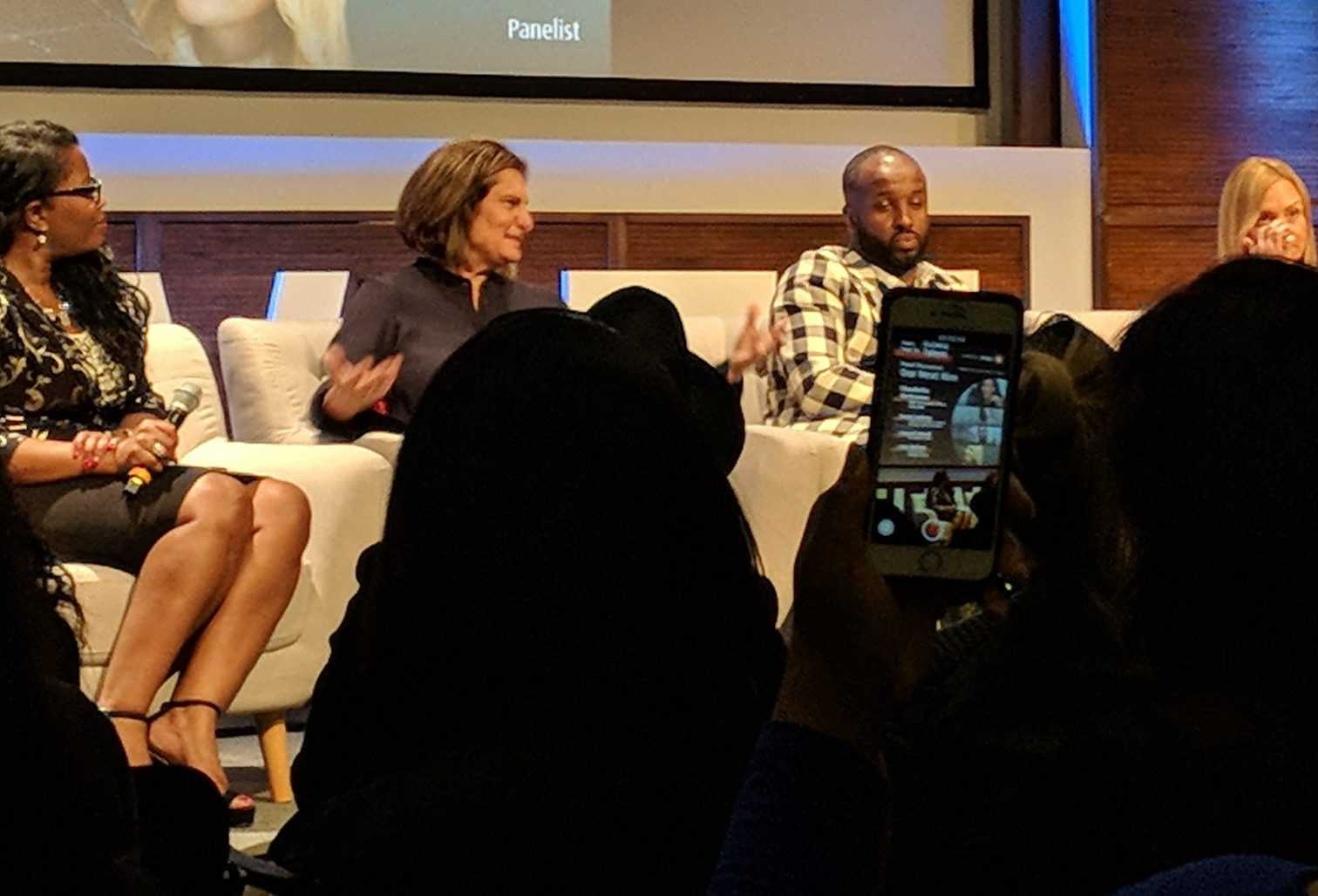on
BY CHRISTINA GWIRA
Anyone taking a look at the lineup, stages and events that occurred during this year’s Elevate Fest (Elevte) will be instantly overwhelmed. Instantly. With over 20,000 guests in attendance, more than 500 media outlets (including Toronto Caribbean Newspaper) and more than 300 speakers, Elevate 2019 really aimed to pack in as much innovation as possible into the Downtown Core. From September 20t – 26th, 2019, various locations across Downtown Toronto were graced with the presence of astronauts and scientists, podcasts and influencers, gathered together to find solutions to our societies tough problems. This is the goal of Elevate, “to unite the world’s innovators to solve society’s greatest challenges”. But how can all of this innovation help us? Full disclosure: I won’t be able to provide you with an answer for that question today. I don’t think it’s an answer I could provide you with tomorrow, or during next week’s issue. However, I will attempt to massage your mind with tidbits of what was learned and shared during my day at Elevate.
First up on the docket are the stages. In total, there were thirteen stages, sprawled across the Downtown Core. The stages that were during this year’s Elevate were: AI, Business, Data Analytics, Digital Transformation, Main Stage: ScaleUp, Money, New Media, Product, Retail, Smart Cities Summit 4.0, Talent, Wellness and Youth. That’s quite a lot. Each stage was represented by a different venue within the City. I hung out mostly at the New Media and Talent stages. New Media took place at the Design Exchange (DX), located at 234 Bay Street. Talent, was nestled deep within the MaRS Centre (MaRS), home to Facebook and many other startups. This was a very cool idea as it allowed you to move and explore the city, while learning about new and interesting advances in technology and business.
Checking in at DX was easy and the volunteers for the event were super helpful and friendly. One of them even took my photo in front of the Elevate sign, which was a nice touch. The first talk that I heard for the day was given by Samantha Barry, the editor-in-chief of GLAMOUR Magazine. Her talk was on, “The Evolution of Women in Power”. The visuals of her presentation were outstanding. She showcased how the magazine had changed its focus from less of a print magazine, to creating content in digital formats, like the “She Makes Money Moves Podcast” – to provide content that is accessible, inclusive and can reach a broader audience. Across the screen, images of women from all backgrounds and sizes entered and exited, a real testament to the content that GLAMOUR creates on a daily basis to uplift and inform their audience. In the age of fake news, bad news and fake views, it was good to see a publication that was putting their coins behind truly making digital media a benefit to all.
The next talk featured Ariel Garten of MUSE. This was a new one for me. Muse is a wearable brain sensing headband. In short, the MUSE headband provides “technology assisted meditation”. Yes, a headband that helps you meditate. Ariel shared with the room her story, which, funny enough, wasn’t really one of a struggle to success, and she was bold in saying so herself. She says that the reason for this is because she has always believed that one can “choose the thoughts in your head”. As such, she wanted to provide a way for people to use the powerful technique of meditation, which she says was a critical part to her success, to help them also achieve their own successes. During her talk, she took us through an exercise on how to deal with our inner jerk. It was an insightful moment, and one that I’ll remember to apply in my own walk of life.
The next talk that I attended at Elevate was one I didn’t plan for. I was busy checking my phone for notifications from home and office, and was looking for a power outlet to charge my phone. Disgruntled with the fact that this particular location didn’t have any charging stations, I wandered back into the green-lit auditorium. I walked into a talk by Jeremie Saunders of Sick Boy Podcast. I had no clue what the heck the talk was about. Come to find out, the talk was about cultivating connection through vulnerability, a very fitting title. At the time, I didn’t know the name of the talk, as it wasn’t one that I had favorited on the super-duper cool Elevate app. However, as I was fiddling with my data (for some reason, it wasn’t working), I was hearing his story talking about “Glamdrew”.
Glamdrew was a guest on the Sickboy Podcast who was living with a terminal form of cancer. Jeremie shared with us snippets from Glamdrew’s podcast episode, including photos and glimpses into the performative art piece that Glamdrew directed and performed, three days before passing away. The talk totally sidetracked me, I didn’t expect it, but it brought to the forefront as to how we can use new media – like podcasting, livestreaming and the like – to create a community that we can become open and honest with.
The next talk was around the world of influencers. The world of influencer marketing is one that is more glitter than gold, and in my opinion, the panel presented before us proved that. I wasn’t impressed with their findings, but I promise you, we’ll get to that in a later article. What would probably be the highlight of my stay at Elevate would be the conversion moderated by Claudette McGowan, who also interviewed Former First Lady Michelle Obama. HXUSE co-founder Ahmed Ismail hammered on the importance of, “getting the bag”, while Erin Alofson of Pinterest made it very clear that when it came to talent, it is the people in sales, that stay around. The question she posed to the audience was this, “how can you bring money to the company?”.
Overall, my experience at Elevate was one that cannot simply be contained in one article. Over the course of the next few editions, I plan to share more about the various nuances and lessons that I experienced and witnessed at this great event. In closing, I do believe that new media can help us, if we are ready and willing to do the necessary work to harness it for our own good, for others are doing, so why shouldn’t we?
Stay in the loop with exclusive news, stories, and insights—delivered straight to your inbox. No fluff, just real content that matters. Sign up today!












